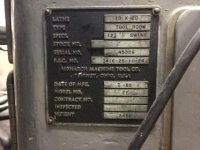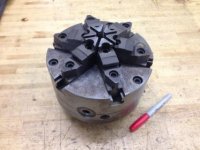a r t
Plastic
- Joined
- Jan 30, 2015
- Location
- Woburn, MA
Monarch 10x20 lathe in good working condition available for sale - the unit is too big for our needs and we need the space.
Built in 1962 with tube controller (and spare tubes included), variable speed and all speeds operate as they should.
Bison chuck in great shape also included.
Located just outside Boston in Woburn, MA.
Looking for $2500 OBO
PM for more info
Art




Built in 1962 with tube controller (and spare tubes included), variable speed and all speeds operate as they should.
Bison chuck in great shape also included.
Located just outside Boston in Woburn, MA.
Looking for $2500 OBO
PM for more info
Art







